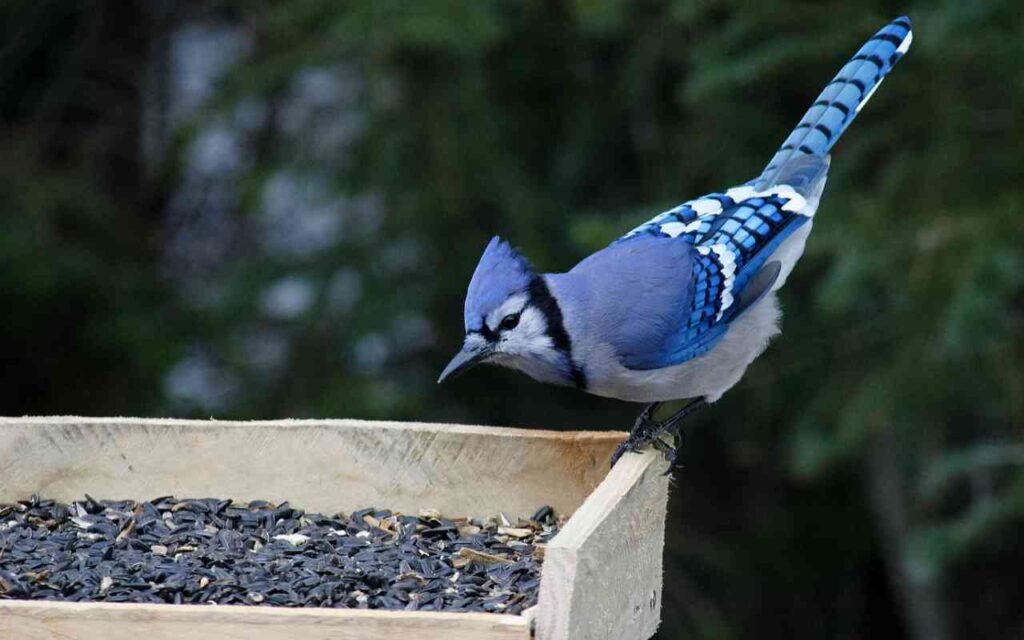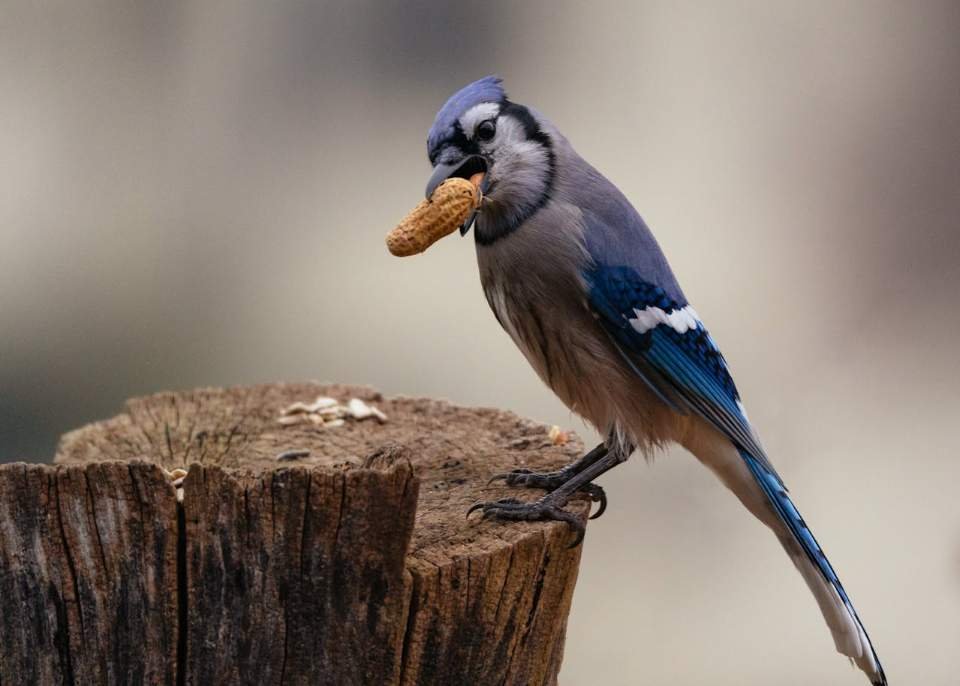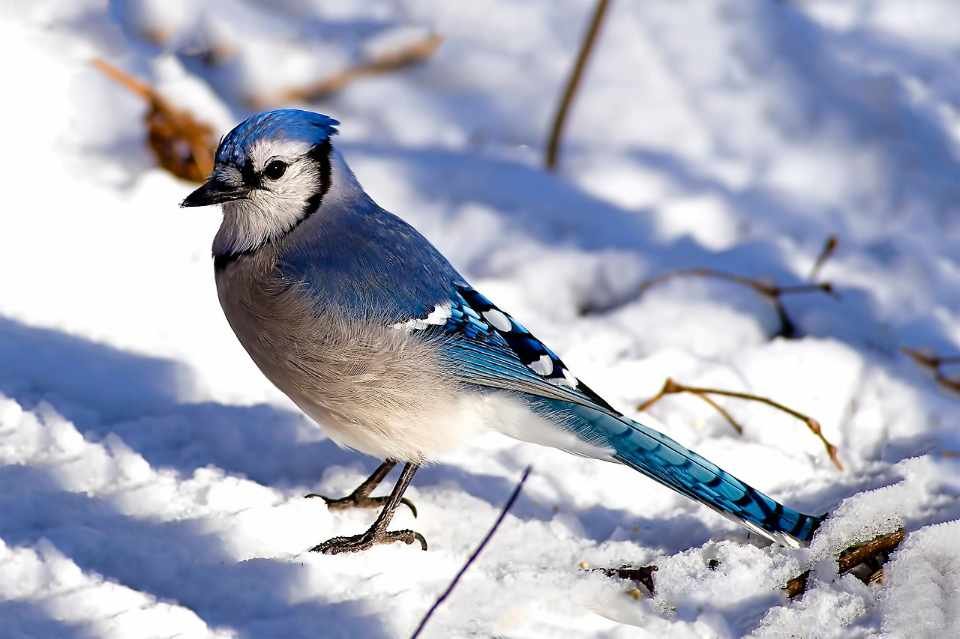If you’ve ever seen a Blue Jay strutting around your backyard like it owns the place, you know there’s something captivating about these birds. I still remember the first time I noticed one at my feeder, puffing up its feathers and giving me this intense “who’s boss?” stare 😳.
Honestly, I felt a little intimidated. But once I got to know them, I realized Blue Jays are one of the most fascinating birds in North America. Stick around, because I’m about to share some super interesting facts about the Blue Jay that might just make you see these feathered divas differently.
Blue Jays Aren’t Just Pretty Faces
You might think Blue Jays are all show and no substance. Sure, they have striking blue feathers that shimmer in the sunlight, but there’s more going on than just a fancy wardrobe.
What makes their feathers blue? Funny enough, it’s not pigment. Their feathers appear blue because of light refraction, thanks to tiny air pockets in the feather structure. So technically, if you plucked a feather (don’t do it, please), it would look grayish-brown! Crazy, right? Nature is full of little tricks like that.
And let’s not forget the crest on top of their head. That little tuft isn’t just for looks. Blue Jays raise it when they’re excited, agitated, or showing dominance. Next time you see one, pay attention, it’s basically their mood ring.
Smart Cookies of the Bird World
Ever notice how Blue Jays seem a bit… cunning? That’s because they are. These birds are highly intelligent and have the problem-solving skills of a tiny feathered genius.
- They can mimic other birds, and sometimes even human sounds. Yup, some folks have reported Blue Jays copying car alarms or dog barks. Imagine sitting on your porch, and suddenly your dog sounds like it’s barking across the street. That’s probably a Blue Jay.
- They’re master planners when it comes to food. Blue Jays hide acorns and other nuts in hundreds of spots to eat later. Some scientists think they even remember where the best stashes are months later. Essentially, they’re like little winged squirrels with a better memory.
- Ever see them scaring off other birds? Blue Jays can be pretty territorial and will warn neighboring birds of predators. They aren’t just clever for themselves, they’re like the neighborhood watch of the bird world.
👉 You know how some people invite themselves over for dinner and then act like they own the place? That’s the Blue Jay at your bird feeders. They’ll swoop in, scatter the smaller songbirds like it’s a rock concert mosh pit, and then help themselves to the buffet. Love them or roll your eyes at them, they’re impossible to ignore in backyard birdwatching.
Blue Jays are part of the Corvid family (that’s the same brainy bunch as crows and ravens), which explains their clever antics. They’ve been caught mimicking hawk calls, stashing food in sneaky hidey-holes, and occasionally just yelling for the fun of it. Think of them as the noisy neighbor you can’t help but gossip about.
So next time one squawks loudly at you, just know it might be trying to tell everyone “predator alert!”
Social Butterflies with a Twist
Blue Jays are social but also complicated. They love hanging out in flocks, but within that social structure, there’s drama, kind of like high school, honestly.
Here’s how their social life works:
- They often form small family groups or larger communal flocks, especially in winter.
- They work together to mob predators, which can be anything from hawks to neighborhood cats.
- But they also have a competitive side, fighting over food or nesting sites. Basically, they’re cooperative but not afraid to throw a little shade.
I once watched a Blue Jay chase a squirrel off my bird feeder. It was a full-on soap opera scene. That moment made me realize, these birds don’t just survive, they thrive with personality.
Acrobats of the Backyard
You know how most birds just hop or flutter? Blue Jays are like the gymnasts of the bird world. They’re nimble, agile, and sometimes downright impressive in their movements.
- They can climb tree trunks and hang upside down like it’s no big deal.
- When feeding, they’ll toss food into the air and catch it mid-flight. I’m not kidding, sometimes I swear they’re doing bird parkour.
- Their wings allow them to make quick directional changes while flying, which helps them evade predators.
Watching a Blue Jay at the feeder is like a mini Cirque du Soleil performance. Seriously, take a minute and just watch. You’ll be amazed at their acrobatics.
Diet: More Than Just Nuts
You might think Blue Jays live on acorns alone, but their diet is surprisingly varied. This adaptability is one reason they do so well in different environments.
Here’s what Blue Jays typically munch on:
- Nuts and seeds (obviously)
- Fruits and berries like cherries and apples
- Insects and small critters, yes, they get protein too
- Eggs or nestlings from other birds if they’re desperate (Nature’s harsh, okay?)
Blue Jays are opportunistic feeders. This means they’ll eat what’s available, which can make them seem a little sneaky when they raid your feeder or a neighbor’s garden. IMO, that just adds to their charm, they’re survivors.
Migration: Who Needs GPS?
Here’s a fun fact: not all Blue Jays migrate, and some migrate unpredictably. Unlike geese or monarch butterflies, Blue Jays don’t follow a strict route every year. Scientists still don’t fully understand why.
- Some Blue Jays stay put all year, especially in the southern parts of their range.
- Others head south in the fall, but it’s usually a “who feels like it?” kind of migration.
- They can travel hundreds of miles if needed, which is impressive for a bird that isn’t a long-distance champion like the Arctic Tern.
So, if you spot a Blue Jay in January in your backyard, don’t be surprised, it might just be a local resident who refuses to leave.
Blue Jays in Culture and Folklore
These birds haven’t just won over birdwatchers, they’ve made a splash in culture too. Blue Jays often symbolize intelligence, communication, and sometimes, mischief.
- In Native American folklore, Blue Jays represent clarity and fearlessness. They’re seen as messengers and protectors.
- People often associate Blue Jays with courage and resourcefulness, probably because of their bold behavior at feeders and around predators.
- And let’s be honest, they make appearances in cartoons and children’s books all the time. They’re colorful, bold, and instantly recognizable, perfect for storytelling.
I’ve always loved this part because it makes observing them feel like connecting with a story that’s bigger than just your backyard.
Tips for Attracting Blue Jays to Your Yard
If you’re reading this thinking, “Okay, I want one of these feathery geniuses in my yard,” here’s how to make it happen.
Food & Feeding:
- Offer peanuts in the shell, sunflower seeds, or suet.
- Keep feeders high and safe from squirrels, because Blue Jays are smart, but squirrels are relentless.
Habitat:
- Plant oak trees if possible, they love acorns.
- Dense shrubs provide cover for nesting and resting.
Water:
- A birdbath or shallow water source will attract them, especially during dry spells.
Patience:
- Blue Jays can be shy at first. Give it a week or two, and you might find them hanging around daily.
FYI, once they start visiting, it can become addictive. You’ll find yourself watching them for hours, noticing every quirky behavior and clever move.
Common Misconceptions About Blue Jays
Let’s clear up some myths so you don’t think you’re dealing with a villainous bird unnecessarily.
Myth 1: Blue Jays steal eggs from nests all the time
Reality: Sure, it happens, but it’s rare. Most Blue Jays are content with insects, nuts, and fruit.
Myth 2: They’re aggressive and mean
Reality: They can be bold, yes, but they’re more protective than aggressive. They want to survive, like any living creature.
Myth 3: They’re just noisy
Reality: Their loud calls can be annoying, but that’s their way of communicating danger or territory. I personally think it adds character to the neighborhood soundtrack.
Fun Facts You Probably Didn’t Know
Before we wrap up, here are some quirky nuggets that make Blue Jays even more fascinating:
- They can imitate hawks to scare away other birds. Talk about intimidation tactics.
- Blue Jays have excellent memories, especially when it comes to storing food.
- Despite their size, they can remember human faces. If you scare one once, it might avoid you in the future.
Honestly, these facts make me respect them even more. They’re like little bird masterminds, clever, bold, and just a tiny bit mischievous. 🙂
Conclusion: Why Blue Jays Deserve Your Attention
So there you have it, a deep dive into the world of Blue Jays. From their brilliant blue feathers to their cunning survival tactics, these birds are more than just backyard visitors, they’re fascinating creatures with personality, intelligence, and a flair for drama.
Next time you spot one, take a minute to watch closely. Notice the crest, the clever antics, and maybe even the occasional acorn toss. I promise you’ll start seeing them not just as birds, but as miniature marvels of nature.
And if you want to get more involved, try attracting them to your yard. Feed, observe, and maybe even take notes. Who knew birdwatching could come with so much entertainment value?
Blue Jays are bold, smart, and endlessly fascinating. Treat them right, and they’ll reward you with hours of enjoyment, and maybe even a little sass along the way.




